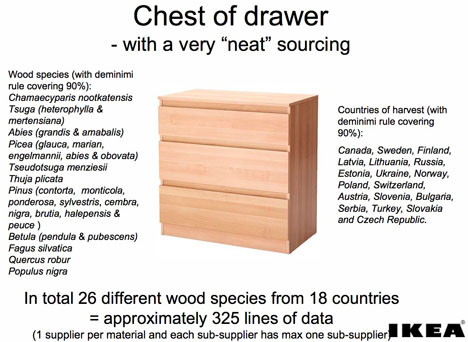Image may be NSFW.
Clik here to view.
Today it is IKEA, not Singer, that is the world's largest furniture manufacturer. Its Swedwood Group production arm moves some 100 million units of furniture a year. That's a lot of wood, and the question is, where does it all come from?
As we saw in the Singer post, if you were around 100 years ago and asked a floor manager at their South Bend or Cairo factory where their wood came from, they could simply point out of the window. Ikea's modern-day needs are considerably more complex.
Image may be NSFW.
Clik here to view.
There aren't enough forests in the world to sustainably make 100 million units a year out of solid wood or even plywood, so it's no surprise that the bulk of IKEA's stuff contains particle board. To be able to create products out of sawmill shavings, sawdust and otherwise unuseable wood chips is an intelligent solution... or at least it would be if we could eliminate the carcinogenic formaldehyde needed to glue it all together. Even so, IKEA's massive sourcing needs require those wood scraps be gathered from myriad sources, so you may be astonished to learn a single dresser can contain 26 different species of wood from 18 different countries.
Image may be NSFW.
Clik here to view.
And that's for a "neat" sourced piece of furniture. But as a recent investigative article by Grist explains, tracking where a particular batch of wood chips actually came from is becomingly increasingly difficult to do:
(more...)Image may be NSFW.
Clik here to view.
Image may be NSFW.
Clik here to view.
Clik here to view.

